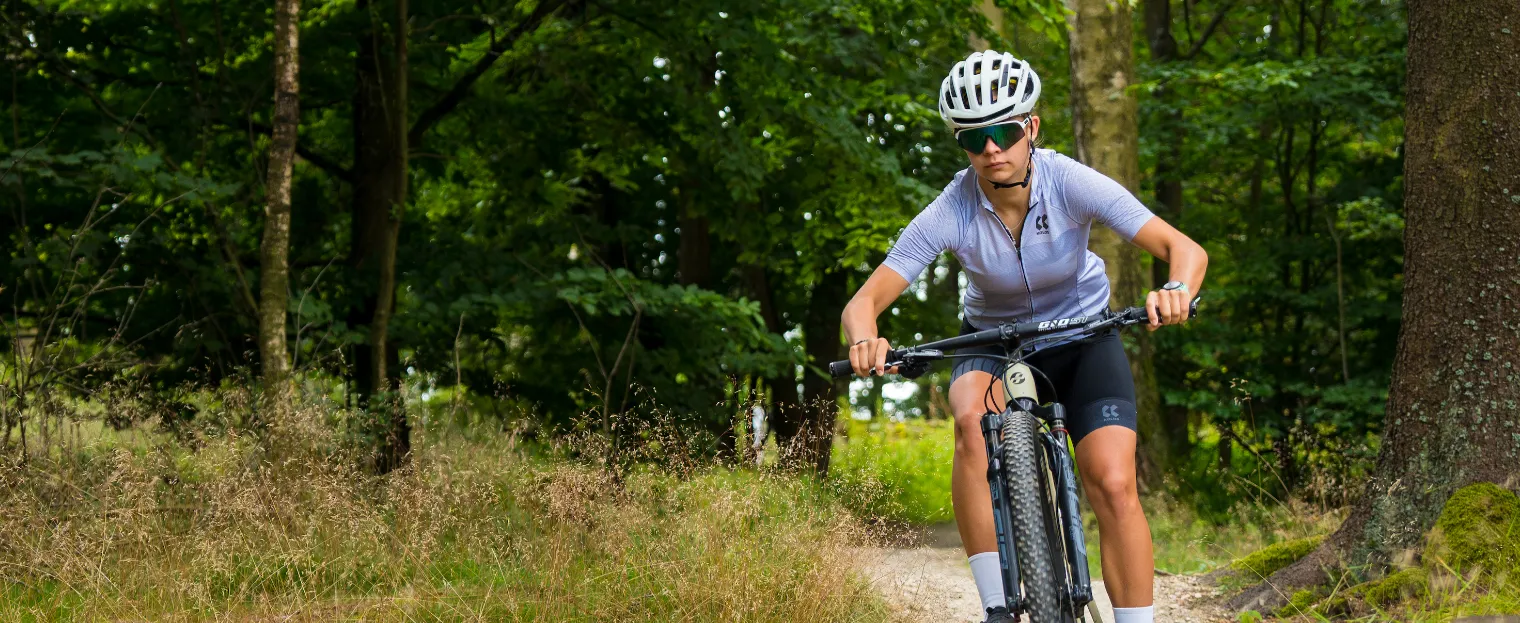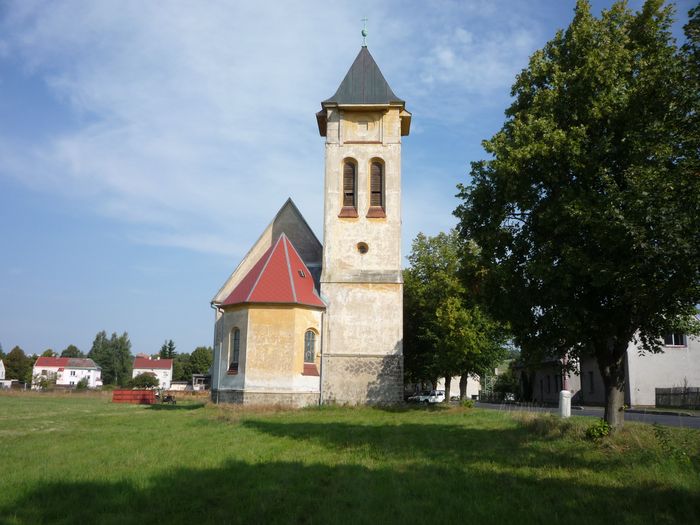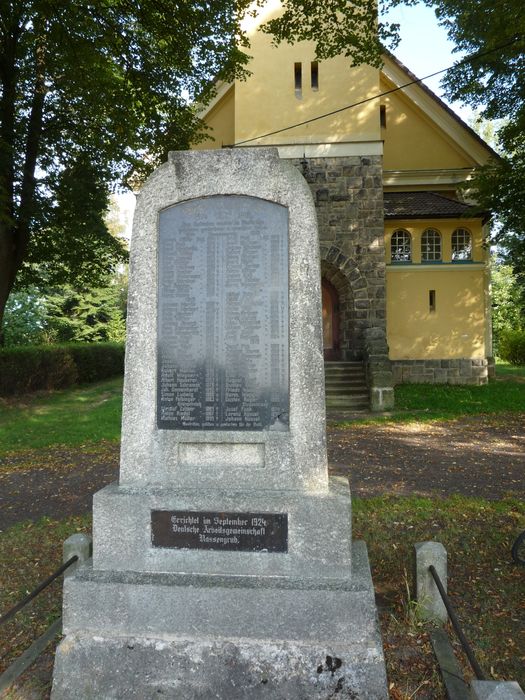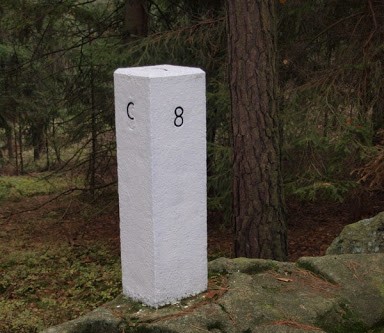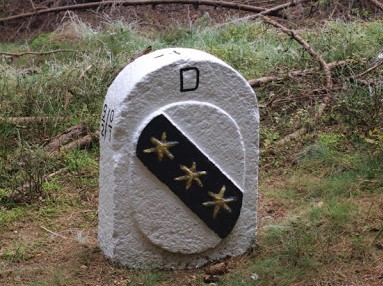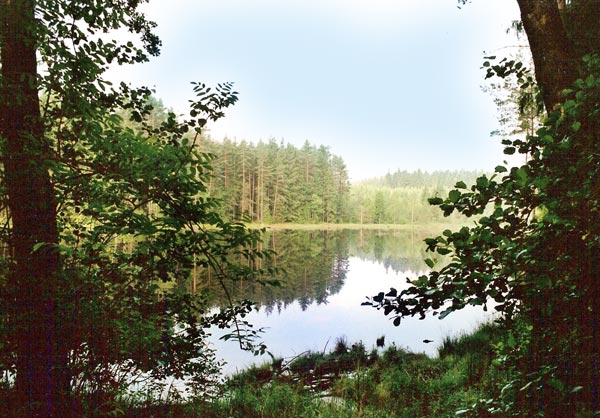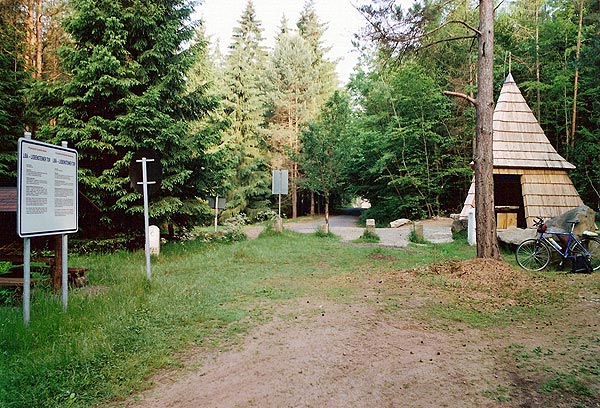Home / Experiences / Cycling
2063 Mokřiny - Nový Žďár, hraniční mezníky - Dubina - Pomezná - Klest
Take a cycling trip through the landscape of the Aš Promontory. The route connects historical sites, natural monuments and forgotten villages, where traces of the past are still reflected today. Enjoy forest paths, romantic valleys and finally discover the secrets of Komorní Hůrka - the youngest Czech volcano.
- demandingness: Medium
- length: 23 km (via Rathsam 25.5 km and with turns up to 41 km)
- route_surface: Paved carriageways (87%) and the rest of the Class III road
- transport: Roads without traffic, on III.class roads. just a little traffic.
- focus: Hiking or mountain biking
Ash
Start your journey at the main train station in Aš, where history and nature go hand in hand. The city, known for its unique atmosphere and historical monuments, is an ideal starting point for exploring the beauties of the surrounding Aš promontory and border trails. You can look forward to great routes with views of natural beauties and historical stops.
Wetlands
Mokřiny was founded in the 15th century and developed thanks to the industry in Aš. Historical buildings have been preserved here, including boarded barns and an Evangelical church from 1913. This church, originally built for the jubilee of Emperor Franz Joseph, today serves the Evangelical Church of Czech Brethren. In the vicinity there is also a monument to the fallen of the First World War and the church of St. Charles Borromeo, built in 1912. Mokřiny was previously an independent municipality.
Border markers, junction
Here our route separates from the EV13 and the Bridge Trail, which lead further into Bavaria. The Bridge Trail continues via Selb and Wunsiedel to Fichtelberg, while the EV13 takes you back to the Czech Republic near Libé. Our route continues towards Cheb.
Boundary stones
In this section of the state border between stones 7/10 and 9/8 you will discover historical landmarks from different periods. Among them you will find stones from 1718 and 1754, marked with the Erkersreuth emblem, and a unique bowl stone from 1718 with a carved cross. The stone has a depression that the researcher K. Alberti associated with Celtic settlement. In addition, you will find boundary stones from 1844 and from the 1930s, when one of them was concreted into a bowl stone. The stones lie on a red-marked hiking trail, suitable for mountain bikes, but you have to look for them, as they are spread out over several hundred meters of the border.
Boar Valley
The cycle route leads through the romantic Kančí údolí, which stretches from Nový Žďár. The valley is known for its beautiful environment and the Slatinný stream (formerly Pstruží potok) flows through it. In the valley there is a crossroads with cycle route 2065, which continues to Vojtanov. Above the valley rise Jelení vrch (627 m) and Kozina (642 m). If you want, you can continue following the signal from Žďár, which connects to this route at the Kančí údolí crossroads. Along the way there is also a forest path branching off, which leads to a quarry and connects to route 2057.
Polensky forest
Here we can turn onto a forest path that will take us to the Lost Pond nature reserve, only 600 m away. This reserve in the Smrčiny nature park was declared in 1997 and protects a transitional peatland with rich flora. The Lost Pond consists of two ponds, which after the dams were dug up became overgrown with wetlands and mosses. The area is known for its geology and geography, it is located on granite rocks and was once considered an impact crater. Rare species of flora and fauna grow here, such as the heart-shaped bearded vulture and the Fuchs' ring-tailed lemur, and the black stork and the mountain newt live here. The path is suitable only for mountain bikes.
Frog, crossroads
The route takes you to the Smrčiny Nature Park and offers beautiful scenery around the Malá and Velká Žabka ponds, formerly known as Drei Lohen Teiche. If you turn onto a forest road, you will reach the Podíelná cottage settlement. Here you can admire the last remains of the former village. After returning to the main route, continue towards the crossroads in the Libský les and the border crossing. The route offers not only nature, but also a piece of history!
Show on mapLiby Forest
At the crossroads in the Libský les, a cart path crosses the border crossing Libá-Liebensteiner Tor. At this place stands a unique forest chapel in the shape of a tetrahedron, built by the inhabitants of Libá and Selb. Near the chapel you will find a stone with a bowl-shaped depression from which water is supplied. On the stone is an inscription commemorating the Czech village and the regular Christmas celebration. Not far away, the path leads to an overgrown rampart built in 1938 as protection against raids. After the crossroads, continue towards Dubina.
Dubina
In the valley by the ponds, there once stood the village of Eichelberg, first mentioned in the 14th century. In the 1930s, it had almost 700 inhabitants, but after the Germans were evicted, it was completely razed to the ground. Today, only traces of the past remain.
Dubina, company
Turn onto cycle route 2062 and visit the former border company from the 1970s, where there is a monument to border guard Láznička, who tragically died while rescuing a refugee. You can also continue to the border crossing and visit the town with the castle, or head along the Ohře to the Rathsam nature reserve.
Rathsam
If you do not turn onto the route at the bend above the river, but drive straight on along the old panel road, part of CT 2286, you will arrive at the Rathsam nature reserve. This reserve protects the meandering confluence of the Ohře and Reslava rivers and the surrounding wetlands. In the past, there was a small settlement of Rathsam, which disappeared after the Germans were expelled. Today, you will find peaceful meadows and silence, where the original access roads have almost disappeared.
Bunker
At Rathsam, if you turn right onto the path along CT 2286, after 150 m you will come across a well-preserved bunker from the post-war Czechoslovak fortifications. This fortress was part of the border defense system in the 1950s–1960s, maintained until the 1990s. The bunker served as a support point and had an entrance hatch marked with a white bollard. There are more than 20 similar buildings in the Cheb area. On the way back along CT 2286, after a few hundred meters you will connect back to cycle route 2063, which will take you to the castle in Pomezná.
Show on mapBordering
If you are not going through the Rathsam reservation, continue along the cycle path through the Libský potok valley and turn off to Pomezná before Ohří. By the sandpit you will find the ruins of a fortress from 1309, originally Markhausen, a village on the border of two countries. The fortress was rebuilt in the 14th century, but after the village disappeared in the 1950s, only ruins remained. Today, Pomezná is also geologically interesting, lying on the border of three geological units. The owner, Petr Jaška, has been working on the reconstruction and, based on archaeological findings, building a museum of the extinct village since 2015.
Chamberlain's hut
Komorní Hůrka, with a height of 503 m, is the youngest Czech volcano and an excellently preserved example of volcanic activity. It was formed at the end of the Tertiary or the beginning of the Quaternary together with the Doupovské Mountains. In the 19th century, experts differed in their opinions about its origin - some claimed that it was formed by settlement, others that it was a volcanic eruption. The volcano also caught the attention of JW Goethe, who visited it in 1808 and participated in the research. The excavation of an adits in 1826 confirmed that it is a volcano. Previously, volcanic ash was mined here for roads in Františkovy Lázně, which created a 15 m deep pit, which visitors often confuse with a crater.
Chamber Court
Komorní Dvůr, once an almost extinct village, is now coming to life thanks to new construction. It lies below Komorní Hůrka. Cycle route 2063 ends here, but you can continue along the Iron Curtain Trail EV13 or the Krušnohorská magistrála.




